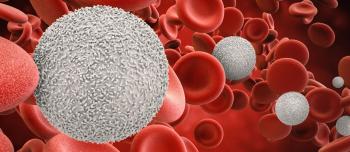Imagine being able to pop a few capsules in your mouth and be protected from bleeds the way infusions now do. That’s the goal of investigators in the Cockrell School of Engineering at The University of Texas at Austin.
The new oral delivery system uses micro- and nanoparticles to carry a protein therapy that treats hemophilia B, or factor IX deficiency. The findings were published in the November 30 issue of the International Journal of Pharmaceutics.
“While an oral delivery platform will be beneficial to all hemophilia B patients, patients in developing countries will benefit the most,” said Sarena Horava, the study’s lead author who is a recent PhD graduate from the Cockrell School. “In many developing countries, the median life expectancy for hemophilia patients is 11 years due to the lack of access to treatment, but our new oral delivery of factor IX can now overcome these issues and improve the worldwide use of this therapy.”
“My most pressing concern was the treatment of younger patients who suffer from hemophilia and who have to apply injections every two days,” co-inventor Nicholas A. Peppas, the director of UT Austin’s Institute for Biomaterials, Drug Delivery and Regenerative Medicine and a Cockrell School professor.
Peppas and Horava’s work builds on their previously published and patented system for the oral delivery of human factor IX (hFIX), a prophylactic treatment for hemophilia B patients. That system was successful in transporting hFIX, and delivered adequate levels of the drug to the target site in the body. The biggest challenge in delivering hFIX is that it is extremely delicate and unstable in the body’s various pH environments. The researchers’ latest system takes advantage of the body’s pH, and changes in gastric enzymes.
As it moves through the digestive tract, the particle-containing capsule resists pepsin, the major gastric enzyme in the stomach, providing protection for the encapsulated drug. In the small intestine, the capsule begins to swell with the increase in pH and is then degraded by trypsin, the major intestinal enzyme, slowly releasing the drug over time.
“Based on the current capabilities of this system, approximately two capsules would be equivalent to one injection,” Horava said. “However, we anticipate that we will make further improvements to the delivery capacity of the oral delivery system and therefore decrease the capsule amount.”
Further testing is needed to fine tune the system before clinical trials can begin in humans on a larger scale. Funding came from the National Institutes of Health, the Fletcher S. Pratt Chair, the National Science Foundation Graduate Research Fellowship Program, the P.E.O. Scholar Award and the UT Austin Undergraduate Research Fellowship.
Source: UT Austin press release, November 28, 2016





